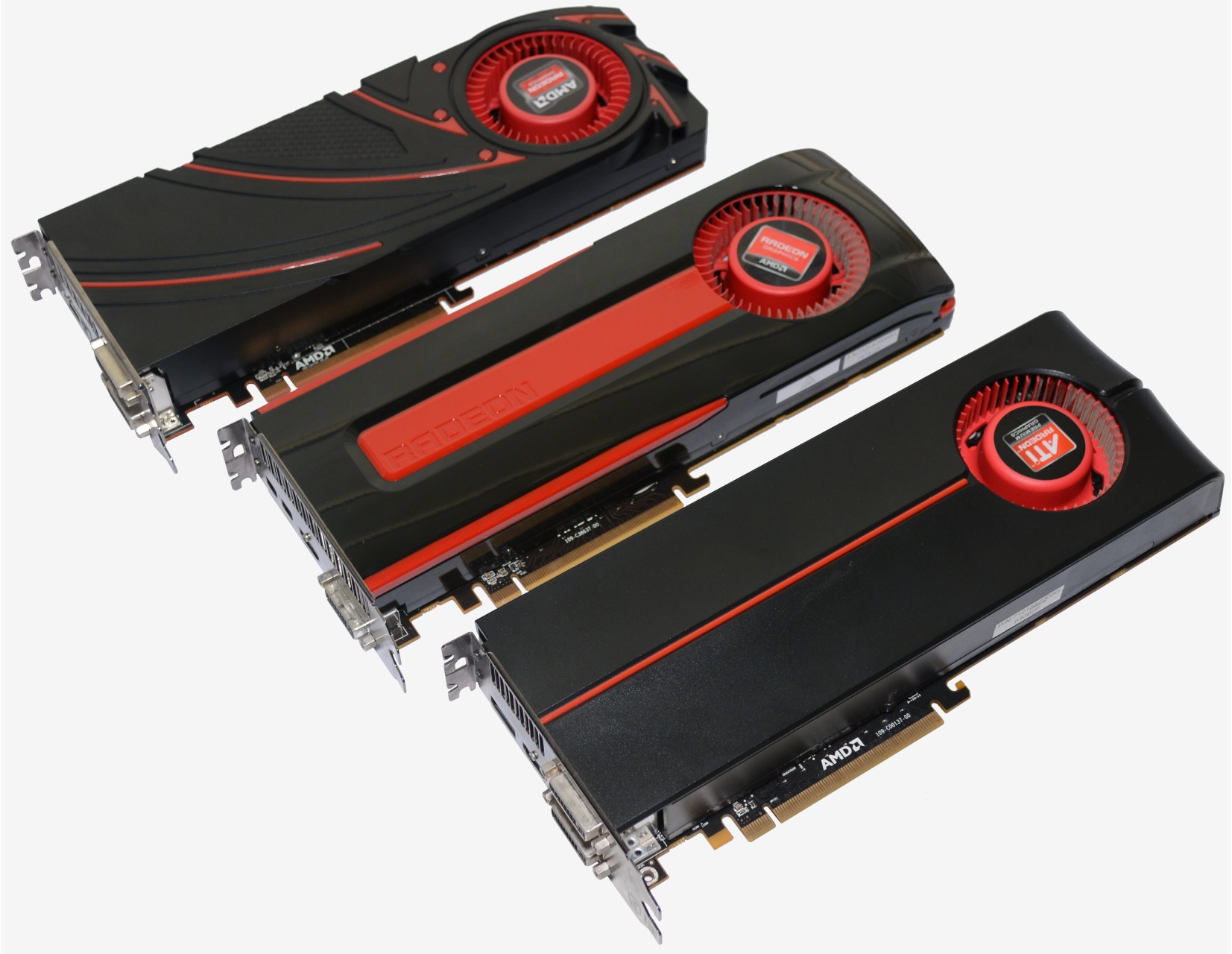Then and Now: 5 Generations of Radeon Graphics Compared
Last month we compared half a decade's worth of DirectX eleven-capable GeForce cards in the latest and greatest PC games to see where Nvidia has made the biggest functioning leaps and which GPUs have aged the best.
We had never compared and then many GPU generations under the same conditions and the results were fascinating. Then naturally folks using AMD Radeons were also curious to see how their unmarried-GPU flagship parts have held up.
Equipped with five years of Radeon technology and the latest Catalyst driver, we set to benchmark major AMD architectures released betwixt late 2009 and Oct 2014: Evergreen (Hard disk drive 5870), Northern Islands (HD 6970), Southern Islands (Hd 7970) and the visitor'south most recent GPU architecture, Ocean Islands (R9 290X).

The HD 7000 serial was a big deal for AMD equally information technology saw the move from 40nm to a 28nm fabrication process. Moreover, it was the company's first truly new compages in 5 years since the Hard disk 2000 series.
Known as 'Graphics Core Next' (GCN), the Hard disk 7000 range featured a RISC SIMD architecture that required considerably more transistors than before simply offered advantages for GPU ciphering and also lead to better efficiency. Most of the GPUs in the Hard disk 7000 series were based on the GCN one.0 compages, though the HD 7790 featured an improved GCN 1.1 logic, which added AMD TrueAudio and a revised version of AMD'southward Powertune engineering.
GCN 1.ii launched forth AMD's Radeon R9 285, featuring improved tessellation performance, lossless delta color pinch to reduce memory bandwidth usage, an updated and more efficient educational activity set, a loftier quality scaler for video, and a new multimedia engine for video encoding and decoding.
AMD's upcoming Radeon 300 serial code-named 'Pirate Islands' is expected to be based on similar GCN 1.2 architecture.
| Radeon | HD 5870 | Hard disk 6970 | Hd 7970 | Hard disk 7970 GHz | R9 290X |
|---|---|---|---|---|---|
| Codename | Cypress XT | Cayman XT | Tahiti XT | Tahiti XT2 | Hawaii XT |
| Fab (nm) | 40 | 40 | 28 | 28 | 28 |
| Transistors (Billion) | 2.15 | 2.64 | 4.31 | 4.31 | six.ii |
| Die size (mm2) | 334 | 389 | 352 | 352 | 438 |
| SPU | 1600 | 1536 | 2048 | 2048 | 2816 |
| TAU | 80 | 96 | 128 | 128 | 176 |
| ROP | 32 | 32 | 32 | 32 | 64 |
| Memory (MB) | 1024 | 2048 | 3072 | 3072 | 4096 |
| Double-decker width (bit) | 256 | 256 | 384 | 384 | 512 |
| Bandwidth (GB/s) | 153.six | 176.0 | 264 | 288 | 320 |
| Release date | Sept-09 | Dec-10 | Jan-12 | June-12 | Oct-13 |
| Toll at release | $380 | $370 | $550 | $500 | $550 |
The Radeon HD 5870 and HD 6970 were clearly the single-GPU flagships for their serial, while the 7970 was replaced later only v months with an overclocked version known as the 7970 GHz Edition, which went on to be the single-GPU flagship for 16 months.
The 7970 GHz was released out of necessity as it allowed AMD to retain the functioning crown over Nvidia's GTX 680 -- if only barely. This was AMD'southward answer to avoid firsthand price cuts, a movement often forced on graphics chip makers after the contest undercuts them in cost vs. performance offered. Still, we didn't like the 7970 GHz Edition when it landed equally it was more than expensive than the standard 7970 and merely offered a minor manufactory overclock. We've included both the 7970 and the 7970 GHz Edition since both were Radeon HD 7000 flagships at a given signal.
Permit's explore how Radeon GPUs accept scaled from one generation to the next over the past few years...
Source: https://www.techspot.com/article/942-five-generations-amd-radeon-graphics-compared/
Posted by: haubertbefterriager.blogspot.com


0 Response to "Then and Now: 5 Generations of Radeon Graphics Compared"
Post a Comment